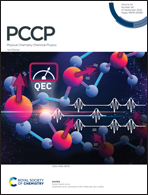Blue energy generation by the temperature-dependent properties in funnel-shaped soft nanochannels
Abstract
Salinity energy generation (SEG) studies have only been done under isothermal conditions at ambient temperature. The production of salinity energy can be improved under non-isothermal conditions, albeit preserving the energy efficiency. In the current study, the effects of gradients of temperature and concentration on the salinity energy generation process were examined simultaneously. Based on the temperature-dependent properties resulting from both temperature and concentration gradients, a numerical study was carried out to determine the maximum efficiency of salinity energy generation in funnel-shaped soft nanochannels. It was presumed that a dense layer of negative charge, called a polyelectrolyte layer (PEL), is coated on the walls of the nanochannels. Co-current and counter-current modes were used to obtain temperature and concentration gradients. Under steady-state conditions, the Poisson–Nernst–Planck, Stokes–Brinkman, and energy equations were numerically solved using equivalent approaches. The results revealed that by increasing the temperature and concentration ratios in both co-current and counter-current modes of operation, the salinity energy generation increased appreciably. The salinity energy generation increased from 30 to 80 pW upon increasing the temperature ratio from 1 to 8 at a constant concentration ratio of 1000 in counter-current mode. As verified from this analysis, low-grade heat sources (<100 °C) provide considerable energy conversion in PEL grafted nanofluidic confinement when placed between electrolyte solutions of different temperatures.



 Please wait while we load your content...
Please wait while we load your content...